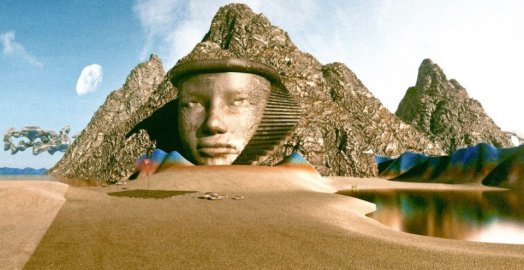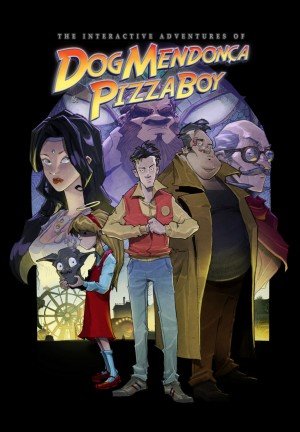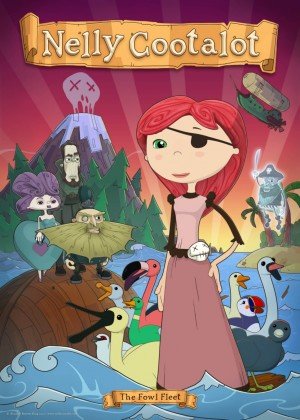Review for Catyph: The Kunci Experiment

It’s the year 2062 and you are an astronaut sent to explore an alternate universe similar to, yet separate from, our own. After an eerie futuristic cutscene, you find yourself on a moon orbiting the breathtaking ringed planet Catyph. You are diverted from your quest by a cryptic messenger with glowing yellow eyes named Germinal. He explains that the planet is suffering a disastrous instability, and its destruction will soon threaten your own native Terra. The only way to save the solar system is to travel to disparate parts of Catyph’s moon Tytaah and gather a mysterious force contained in six black dice. A further complication is the cigar-chomping General Lantier from Terra, who contacts you and claims that Germinal himself may be the true threat. As Catyph: The Kunci Experiment unfolds, you’ll come to realize that this mission will require not only courage but brain power and perseverance as well, as the dice can only be accessed after myriad shrewdly devious challenges are solved.
Catyph is the sequel to ASA: A Space Adventure, and is once again mostly the work of one man, Simon Mesnard, who is the game’s primary designer, artist, writer, animator and programmer. I’ve played ASA, and as solid as that debut adventure was, I found many improvements this time around. The environments are larger and animation now brings them to life. Navigation is smoother and the voice-overs are more engaging, particularly those of Germinal and Lantier. Although you will find more nuances in the story if you’ve already played ASA, newcomers will find that Catyph can be thoroughly enjoyed entirely on its own.
While trying to outwit Germinal and save the world, you will visit several imaginative alien locales (you can drop by most of them in any order you choose). There’s a frozen region with austere rock formations and ominous machines hidden under a blanket of snow. In direct contrast, a magnificent palace sits at the heart of a lava flow, full of gleaming tiles, carved wood and monstrous statues. Another area features immense plants with white spire-tipped stalks, twisty paths, slick high-tech devices and shadowed, jungle-like depths. One environment in particular was wildly unexpected and extremely effective. If the Catyph universe is an echo of our own, this world is an impressionistic twin within a twin. It is colorful, gorgeous and refreshing.
Each location has its own brand of animated vitality, ranging from blowing mist to drifting snow, buzzing insects to floating spores, and creatures that threaten or flee. The opening and closing cutscenes, in particular, are fascinating to watch. The first has an almost balletic quality, with geometric shapes, stark contrasts in black-and-white with bits of color strewn about, and soaring movement on the part of your astronaut avatar. The last reveals the fate of the characters as the world balances between salvation or extinction.
Though compelling storytelling and immersive surroundings are clearly aspects of Catyph’s appeal, the game’s fiercest focus (and that which will take up the majority of time and energy) is its abundant puzzles. There’s a sprinkling of inventory-based challenges, but the bulk of the puzzling involves acute scrutiny of the gameworld, pinpointing patterns, and using that knowledge to open doors, activate machines, or enter codes. You will have to take notes and/or study the scenery. I did lots of both, spending hours poring over various screenshots I’d taken because clues are often located far from the actual mechanisms. My favorite challenges were a time travel sequence with a dripping pipe, stymieing a sea creature while retrieving a clapper, and deciphering the clues in hamster formations.
Many of the conundrums can be solved by ordinary folks, but the harder ones are aimed at a certain type of gamer – someone who, when presented with a puzzle, feels a pleasant rush and a desire to noodle the answer out, no matter how long it takes. You know who you are. You think about the puzzle in the shower. You think about it before bed at night. You think about it when you ought to be working. And then, in a moment of distraction, suddenly the solution (or an entirely different hypothesis) occurs to you. You test your new idea and then celebrate – you’ve done it!
Catyph throws you into the puzzle den almost immediately with a real doozy of a spark plug puzzle. (You think inserting spark plugs in the right slot would be easy? Think again.) This is odd because in all the other areas you explore, the puzzles start out easier and then get tougher. Perhaps the initial conundrums are tough from the get-go to give you a chance to start again and adjust the Mode in which you will play: Story, Normal, Hard or Classic. I recommend Story Mode for all but the most passionate lovers of brazenly difficult puzzles. Story Mode gives you the greatest flexibility: all the same puzzles as in the more difficult Modes, plus access to the hint system, the ability to skip a few of the more difficult puzzles, and unlimited Blue Matter points.
What are Blue Matter points, you ask? Well, they represent a kind of resource management on the harder difficulty settings. Some of the puzzles can only be solved and (for certain places) access can only be gained by the latest, greatest Blue Matter technology, which is stored in your inventory. A small menu in the lower right tells you how many times you can still use this special energy, shown in the form of points. If using Blue Matter were simply straightforward – if you always knew exactly how and where to use it – managing it wouldn’t impact puzzle solving. But it’s possible to have to experiment with some of the puzzles, and if you use Blue Matter too soon or incorrectly, you’ll deplete all the points you’ve built up and will have to find a way to get more.
One of the ways to do this is by avoiding whizzing objects in a keyboard-based arcade game, which experienced action gamers will find quite simple. (Story Mode also allows access to this game through its on-screen icon, but only for fun with no Blue Matter point incentive.) I personally spent about an hour getting to the stage where, each time I played the sequence, I got at least one point. Alternatively, there are a few places (about one per environment) where you can backtrack to collect Blue Matter, but that means re-navigating to those spots to acquire it. Of course, you can always save your game every time right before using Blue Matter, and then reload the save if you haven’t used it correctly. But that’s a pain in the neck after a while. You’ve gotta really love the I’ll-do-anything-awkward-to-solve-this-puzzle philosophy in order to constantly reload your game while fiddling around.
This game has a bunch of math conundrums, including a non-base ten math system. If you’re an engineer or have played around with software programming, you will solve these challenges more readily than someone who uses numbers just once a year at income tax time. (In case you haven’t guessed, I’m in the latter category.) But the puzzles go beyond tricky math to include guessing which patterns should be compared and contrasted, which order makes sense, and which number operations should be used – with significant trial-and-error required as well.
You’ll also encounter sequences where you’re translating glyphs from an alien language. This is tough because most of the glyphs have multiple meanings. I wrote pages of translations that made little or no sense until I looked for hints. A typical fumbled translation of mine: “They move slowly, take, or give direction or point their big planet out of the world symbol.” The only glyph puzzle I managed fairly correctly was the shortest one and made no difference to any later outcome. It came out thusly: “This manmade, small book ends.”
The level of puzzle difficulty is ameliorated by Catyph’s hint system, a series of images without text explanations. Peeking at the hints is helpful even without using them, because you gain an idea of the general order in which the challenges should be solved. Occasionally the hints were hard to interpret or told me what I’d already figured out, but for the most part the system was exceedingly helpful. There’s one drawback, of course: you can only access hints by using Blue Matter points. So unless you’re playing in Story Mode (where points are never depleted), you’re back doing the manage-the-resources thing.
Even with hints, one of the challenges falls squarely in the crazily-difficult realm – or at least, it did when I played, though Mesnard has since added a puzzle skip option after a number of failed attempts. Disclosure: I am not an expert at tracing images with the mouse – memories of drawing on the slate in Myst V still make me shudder – but Catyph’s ball pathway device takes mouse movement to a whole new level. You have to trace a path without hitting any of the serpentine walls and do it within a short time period. At first I assumed that I needed finesse with the mouse, plus speed. I attempted this dozens of times, triggering only the “you have failed” buzzer. I then moved along the pathway veeery slowly (even if the timer would run out) to find the correct placement for each portion of the path. No luck. Surprisingly, I got further in the challenge by throwing accuracy to the winds and swiping up and down and around as fast as I could in a general serpentine pattern. At long last, success! Well, sort of. I received a message that I would have to try again because I had overlooked something. Grrrrr. The hint system gave me a clue that I had indeed ignored so I tried again. No joy. I was still missing something even the hint system didn’t make obvious. At last, after staring at the screen for several minutes, I realized that I had misinterpreted a detail, and finally I was able to advance.
Catyph has been compared to Myst, and in general I agree that it scratches that itch, should you happen to be happily afflicted. The worlds have the same imaginative “wow” factor that draws you in and then makes you gasp. Two areas in particular brought back memories of Riven with stone cliffs, quirky architecture, and unusual plant, animal, and insect life. Brief joyrides in vehicles that go underwater or up in the air are also Cyan-like. The puzzles in Catyph are much more frequent than in the Myst series, however, and more difficult. And rather than using handwritten journals, the futuristic story here progresses via video transmissions and datalogs from an Artificial Intelligence device called M.A.I.D.EN., containing much background information about Catyph and its moons, as well as Terran culture and history. Some minor grammatical errors can be found in the large blocks of text, though perhaps that’s to be expected since it’s been translated from the original Terran.
Also like the Myst games, much effort has been put into ambient sound – the buzz of insects, the creak of metal, lapping waves and singing birds – and music. Background scores includes pensive piano and orchestral melodies found in rustic areas, uncanny techno tunes in the massive metal ships, and imperative strings during moments of drama. A vocal solo at the end took me by surprise, but works extremely well.
Catyph is a point-and-click adventure combining slideshow and 180-degree panoramic styles with animated transitions between scenes. In classic first-person fashion, you are an AFGNCAAP: Ageless, Faceless, Gender-Neutral, Culturally Ambiguous Adventure Person. Hotspots and directional arrows are tiny, though they do pulse to attract attention. Nevertheless, I sometimes missed an indicator, particularly where there was snow blowing across the screen or pools of lava flowing by (most of the arrows are red). The inventory is easy to use by merely sliding the cursor to the top of the screen. The game contains an autosave plus three save slots, which originally contained an odd glitch that has now been corrected.
It took me almost 35 hours to finish this game, and by the time the credits launched, I really did feel as though I had been on a space odyssey. Apparently there are different endings, depending upon whether you’ve accessed all the transmissions. The final cutscene I saw was mind-blowing, and I watched it several times. It contains a couple of tantalizing ambiguities, and it’s worth paying attention after the credits to see what else occurs.
The moments I relished in Catyph: The Kunci Experiment were the long stretches of eye-popping, varied exploration; the video communications with bossy General Lantier and the elusive, golden-eyed Germinal; and the varied conundrums in each new area before the final, remarkably tough head-scratchers. But I also enjoyed the slow revelation of the story and the sense of desperation that was building toward a climax. At its heart, this is a game that aims to test your gray matter over and over again. If you are the type who finishes adventure games thinking: “that was way too easy,” this game is definitely for you. Well-thought-out, twistily-elaborate puzzle adventures don’t come down the pike all that often anymore. I recommend that you hop on board this one.






























